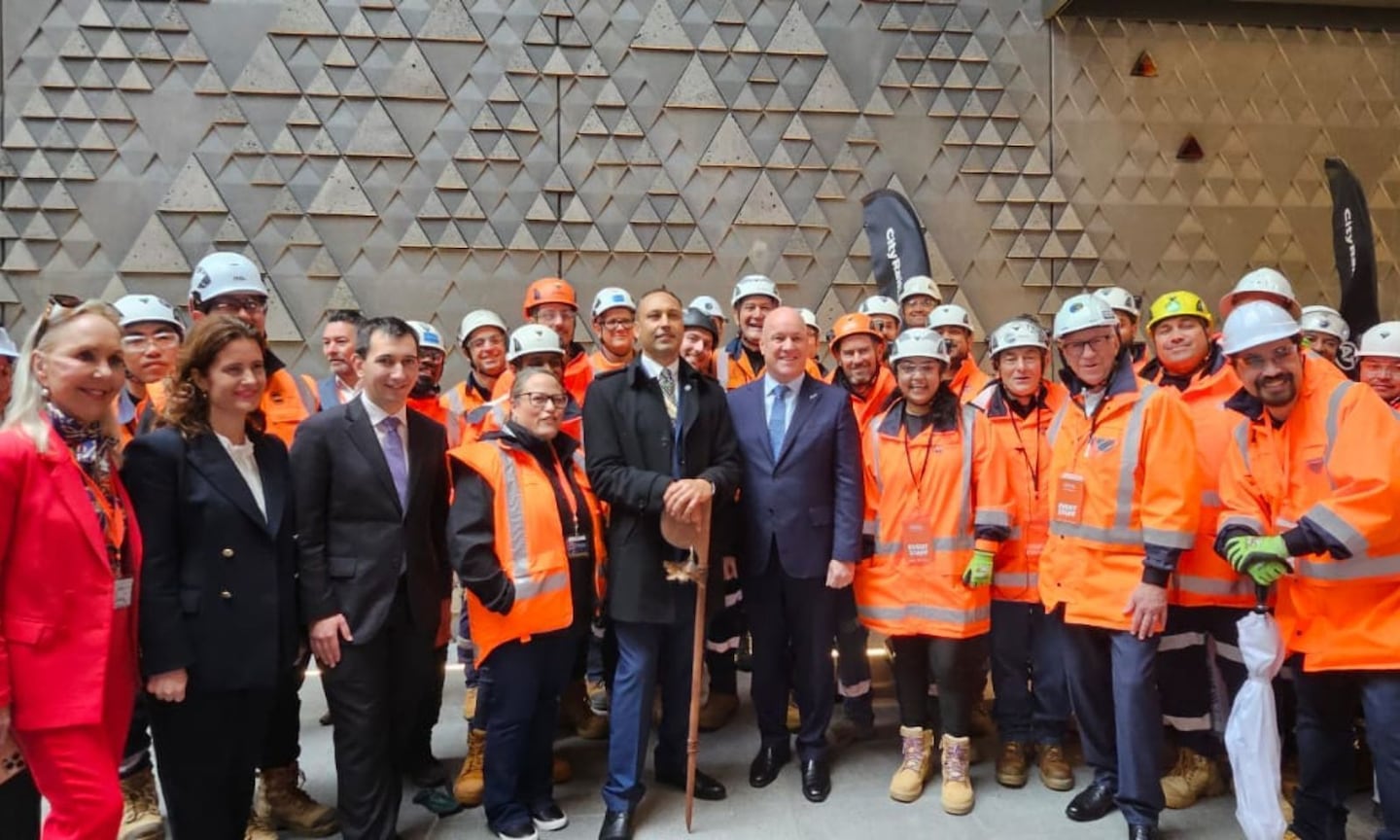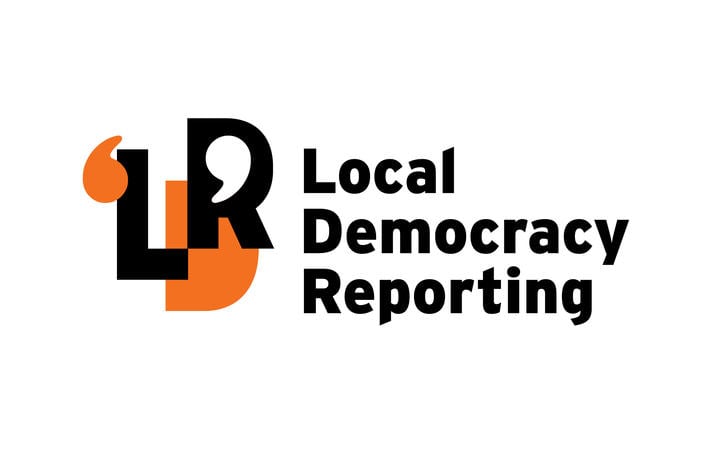Auckland City Rail Link (CRL) must deliver for Māori and Pacific communities that rely heavily on public transport, Ngāti Whātua Ōrākei says.
This comes as City Rail Link awards contracts worth $152 million to Māori and Pasifika businesses, according to CRL’s latest social outcomes report.
But Ngarimu Blair, the deputy chair of Ngāti Whātua Ōrākei, says genuine partnerships and equity are still out of reach, emphasising the importance of CRL delivering benefits for Pacific and Māori communities.
As Auckland’s $5.5 billion project nears completion in 2026, Blair highlights the need for fair access, cultural visibility, and lasting economic benefits for all.
He says Auckland is still a long way from achieving true partnership in this major transport project.
At an exclusive event on Friday, politicians, mana whenua, and project partners boarded the first test train at Maungawhau Station to travel through New Zealand’s 3.45-kilometre underground tunnels.

Blair described the ride as “an auspicious event” after decades of planning, political effort, and technical work.
He says infrastructure projects like the CRL can help lift Auckland following a slow post-Covid recovery.
“This station’s looking really cool. It’s got subtle reflections of our Polynesian Māori design, so people, when they come here, know they’re in Tāmaki Makaurau and Te Moana-nui-a-Kiwa in the South Pacific.
“We hope it will kickstart Auckland again. Infrastructure like this is a key plank for the economy to move people around.”
CRL chief executive Patrick Brockie says the project has exceeded its procurement targets for Māori and Pasifika suppliers.
“We’ve been very passionate around procurement using Māori and Pasifika businesses, and with our graduate programme, we’re building career paths for rangatahi,” Brockie says.
“We’ve procured over $155 million from Māori and Pasifika businesses, and that doesn’t include the subcontracts they’ve been involved in with our lead contractors. Even when we reached some of the targets that we had for procurement, the contractors went beyond that.”
Blair says more Māori and Pacific firms are positioning themselves for major contracts, but ownership of the biggest assets remains a challenge. He says equity also means providing people with genuine transportation options.

“We’re not where we need to be. We don’t own the tunnel-boring company, we don’t own the trains, we don’t own the companies that have all the diggers. More money in our pockets as ‘aiga, as families and as individuals makes life easier at home. We’re still not there, but that’s where we’ve got to get to.
“The more we have projects like this, the busways, cycleways and so on, the equity comes with that. Those are much more choices than just having to buy a car, maintain it, pay the road user charges and the mechanics’ fees.”
Prime Minister Christopher Luxon says the CRL will facilitate more frequent journeys from the south and west into the city, supported by a $50 weekly fare cap.
“That makes it affordable, accessible, frequent, all those things that we want people in Auckland to enjoy, including in the south.”
Auckland Mayor Wayne Brown, who claims he introduced the fare cap, says it coincides with rising driving costs.
“The costs of public transport are coming down. From an equitable point of view, it’s going to be good news for those people who use more and more public transport.”

Dean Kimpton, the chief executive of Auckland Transport, says the CRL will create a more reliable and connected network.
“This is a game-changer. It’s about unlocking the potential of the rail network so people can travel more directly, more often, and with greater confidence.”
Blair believes the CRL will make a major difference in daily life.
“My local station’s Glen Eden out west. Currently it’s 55 minutes. After this opens, that ride will go from 55 minutes to 25 minutes. More time means more time for family, more time for thinking on the train about the day ahead.” Brockie says
South Auckland passengers will gain direct access to central destinations without the need for transfers.
“If you’re coming from South Auckland, you can go straight through to Karangahape, Maungawhau or Waitematā without having to transfer.
“Go to the rugby, a restaurant or a concert without getting off and walking. It’s going to save time and make these areas more accessible, both for work and socially.”
Brockie says mana whenua have had “a massive influence” on the design and storytelling at CRL stations.
“It’s not just a building. Each site has its own story, and they’re all very special.”
Albert-Eden-Puketāpapa ward councillor Christine Fletcher says the station’s cultural elements, including artwork and the presence of mana whenua, reflect “the sensitivity to the maunga”, which she finds beautiful.

When asked about the significance of the CRL, especially concerning public transport’s connections to affordability, reliability, and safety, Fletcher says: “Well, we think of it in a functionality sense, but it’s also about people. While you’re on the train, you take in your surroundings. When I take my mokos, we catch the train a lot, and they take it in — it’s part of who they are, where they’re going, and their life journey.
“This is an emotional day for me. Although there are still 16,000 tests to complete before opening, I believe Pasifika can feel proud of this. During the design phase, Pauline Winter from the Pasifika community helped define what Auckland might be. This project truly lives and breathes that spirit, and I think it’s fantastic for the future.”
Blair encourages Aucklanders to be patient as the city develops its transport network.
“We’re building the network still as a city. There’s been years of underinvestment. There’s just not enough infrastructure. A lot of our people have relied on public transport over the years. I’d say hang in there, stick with it.
”Projects like this will, on the surface anyway, look like a new era and a new standard of service. What’s the alternative? Sitting in a car for an hour or more at times. We’re getting there, but there is a long way to go. Acknowledge that.”
Brown believes the new Maungawhau Station should become a hub for urban living.
“The big project here is to create almost a city of people right here at Maungawhau, we want entertainment, food, groceries. So there’s a little town here, so these people don’t have to jump in cars. They’re right on top of a place to get around.” Luxon says the Government is already working to attract overseas partners to invest in infrastructure and development along the CRL corridor.
“We held the Infrastructure Investment Summit here in Auckland, we were able to bring in people from all around the world with capital that actually want to partner with us to build out that infrastructure.”



